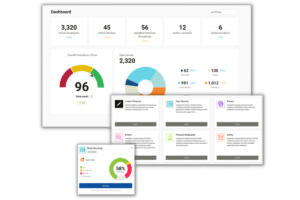
Billing errors alone are causing significant financial losses for the healthcare industry, on the order of $935 million per week. With the U.S. consistently hemorrhaging money through wasteful practices, more healthcare organizations are opting to use third-party medical billing companies to reduce the chance of errors within their billing operations.
It’s becoming more well-known that billing is one of the most common compliance risk areas outlined by the Office of the Inspector General (OIG). Behind this is the difficulty that billing departments have with existing risk factors such as unbundling, non-covered service billing, and billing for unrendered services that haven’t been presented on claim submissions. The occurrence of these issues is consistent, and over time, they can result in thousands of dollars lost in compliance penalties.
The OIG’s purpose is to fight incidents of fraud, waste, and abuse, and any company that acts as an intermediary between patients and practitioners faces a variety of challenges, from maintaining confidentiality and integrity to having high levels of risk awareness.
While third parties do alleviate considerable strain on businesses, from cost reduction to closing the gap for billing errors, they still face hurdles to remain aligned with regulation changes and new releases. With OIG compliance program guidance for third-party medical billing companies, it’s simpler to keep risk levels low.
Keep reading to find out how your OIG compliance program should look.
Understanding the OIG Compliance Program Guidance
The purpose of the OIG in medical billing is to give companies guidance for their billing operations while helping them mitigate risks when submitting claims to entities such as Medicare. The OIG might impose sanctions for various things, including presenting false statements or claims, misrepresenting information within claims, producing fraudulent documentation, and knowingly omitting information from submissions.
OIG compliance program guidance for third-party medical billing companies provides a more robust framework to help identify risks before they occur. It can also help to mitigate risks associated with billing and coding practices.
The primary purpose of a compliance program is to formalize using proactive measures that prioritize prevention, detection, and responsiveness to prevent fraud and abusive practices.
The Primary Elements of an Effective Compliance Program In 2024
The OIG has identified 7 key elements in an effective compliance program. As of 2024, companies are making good use of the General Compliance Program Guidance (GCPG) resource released by the OIG. Based on this guidance, your program’s infrastructure should be based on:
1. Written Policies and Procedures
Companies should prioritize establishing clear and concise policies and procedures reflecting their compliance commitment. These policies should outline patient privacy standards and essential procedures for reporting and navigating compliance issues. These documents are meant to establish workflows, set documentation standards, and define oversight roles.
Additionally, clearly written policies and procedures help implement controls across any business. This helps manage and mitigate compliance risks effectively throughout an organization.
2. Compliance Leadership and Oversight
Compliance leadership and oversight, through the designation of a Compliance Officer and Compliance Committee, ensures that your organization follows policies, procedures, and standards of conduct. They are also responsible for handling responses to reported breaches or incidents, and implementing corrective actions.
3. Compliance Training and Continued Education
Businesses need to prioritize providing regular training and education to their employees about compliance, relevant laws, and regulations. One of the best ways to do this is to form and launch a compliance program. Doing this ensures that everyone is aware of their responsibilities.
Assessing initial training needs and continued education can enhance compliance adherence. The OIG suggests regularly reviewing required training, which can be accomplished by implementing an intuitive system to track training needs and progress.
4. Effective Communication
Effective communication is part of continued policy maintenance and enhances accessibility and understandability. The OIG suggests developing channels to enhance communication or to employ alternatives if certain communication is restricted to a subset of employees. Some of these options can include hotlines and open-door policies.
5. Monitoring and Auditing
Preparing your business for an audit involves having an audit trail to support your network, having an audit plan in place, and clear communication. The OIG suggests implementing routine monitoring and auditing processes to identify potential compliance issues. This proactive approach helps medical billing companies to detect and address problems before they escalate.
6. Enforcement as Needed
Establishing an OIG compliance program limits issues of noncompliance incidents. Enforcing these compliance standards consistently across an organization will help improve adherence to the program.
7. Response and Prevention
Per the OIG, developing procedures for detection responses will help businesses take corrective action quickly. This includes making any necessary changes to help prevent similar issues from occurring in the future.
Making OIG Compliance Simpler for Third-Party Medical Billing Companies
By developing, launching, and adhering to a compliance program, OIG compliance program guidance for third-party medical billing companies can ensure that operations are continuously ethical, efficient, and compliant.
This plan not only protects a business from legal and financial repercussions but also enhances a business’s reputation. Operating as a third party comes with its own set of complexities but it doesn’t have to with the right resources.
Schedule a demo to learn how to implement and maintain OIG compliance efforts today.









